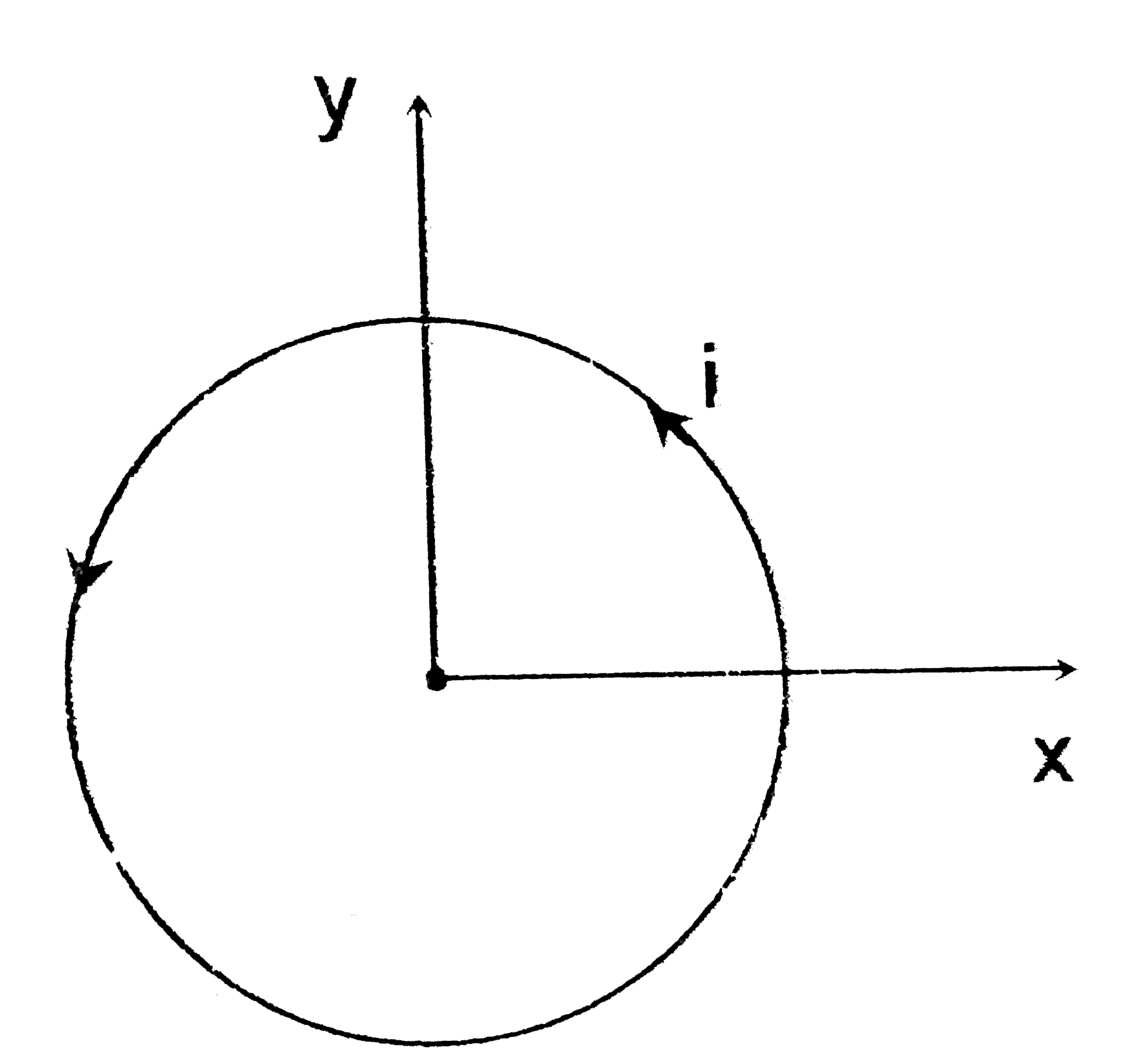The primary origin(s) of magnetism lies in
atomic currents
pauli exlucison principle
polar nature of molecules
intrinsic spin of electrons
To solve the question regarding the primary origin(s) of magnetism, we can break it down into a few key steps:
1. Understanding Charge and Magnetism:
- The primary source of magnetism is related to electric charge. Magnetism originates from the movement of electric charges.
2. Structure of the Atom:
- An atom consists of a nucleus at its center, surrounded by electrons that revolve around it in circular orbits. This motion of electrons is crucial for understanding magnetism.
3. Movement of Electrons:
- As electrons revolve around the nucleus, they are considered moving charges. A moving charge generates a current.
4. Orbital Angular Momentum:
- The motion of electrons in their orbits creates what is known as orbital angular momentum. This is a key factor in the generation of magnetism.
5. Atomic Current:
- The movement of these charges (electrons) results in atomic currents. When there is an atomic current, it produces a magnetic field around it.
6. Spin of Electrons:
- In addition to revolving around the nucleus, electrons also have an intrinsic property known as spin. This spinning motion contributes to another form of angular momentum called spin angular momentum.
7. Spin Magnetic Moment:
- The spin of the electron generates a spin magnetic moment. This intrinsic spin is fundamental to the magnetic properties of materials.
8. Conclusion:
- Therefore, the primary origins of magnetism can be attributed to two main factors:
- Atomic current (due to the motion of electrons around the nucleus)
- Intrinsic spin of the electron (which creates a spin magnetic moment).
Final Answer:
The primary origin(s) of magnetism lies in the atomic current generated by the motion of electrons and the intrinsic spin of the electrons.
---
- The primary source of magnetism is related to electric charge. Magnetism originates from the movement of electric charges.
- An atom consists of a nucleus at its center, surrounded by electrons that revolve around it in circular orbits. This motion of electrons is crucial for understanding magnetism.
- As electrons revolve around the nucleus, they are considered moving charges. A moving charge generates a current.
- The motion of electrons in their orbits creates what is known as orbital angular momentum. This is a key factor in the generation of magnetism.
- The movement of these charges (electrons) results in atomic currents. When there is an atomic current, it produces a magnetic field around it.
- In addition to revolving around the nucleus, electrons also have an intrinsic property known as spin. This spinning motion contributes to another form of angular momentum called spin angular momentum.
- The spin of the electron generates a spin magnetic moment. This intrinsic spin is fundamental to the magnetic properties of materials.
- Therefore, the primary origins of magnetism can be attributed to two main factors:
- Atomic current (due to the motion of electrons around the nucleus)
- Intrinsic spin of the electron (which creates a spin magnetic moment).
The primary origin(s) of magnetism lies in the atomic current generated by the motion of electrons and the intrinsic spin of the electrons.
Topper's Solved these Questions
- BOOK - NCERT EXEMPLAR ENGLISHCHAPTER - ELECTROSTATIC POTENTIAL AND CAPACITANCEEXERCISE - Long Answer Type Question10videos
ELECTROSTATIC POTENTIAL AND CAPACITANCE
- BOOK - NCERT EXEMPLAR ENGLISHCHAPTER - MOVING CHARNGES AND MAGNETISMEXERCISE - Long Answer Type Questions7videos
MOVING CHARNGES AND MAGNETISM
Similar Questions
Knowledge Check
- Question 1 - Select One
Tracheids of the primary plant body originate from the :
AprotodermBprocambiumCground meristemDxylem rays
A circular loop of radius R, carrying current I, lies in x−y plane with its center at origin. The total magnetic flux through x−y plane is
View SolutionExplain the origin of term magnetic quantum number ?
View SolutionA short bar magnet of magnetic moment 1.5Am2 is placed along x-axis at origin. If the magnetic field along line joining origin to point [P(2√3,2,0)]m is [√n⋅10−7128(T)], Then n should be
View SolutionA circular loop of radius R , carrying I, lies in x−y plane with its origin . The total magnetic flux through x−y plane is
View SolutionA circular loop of radius R , carrying I, lies in x−y plane with its origin . The total magnetic flux through x−y plane is
View SolutionMagnetic field in a space is given as B=−BoxRˆk. A circular ring of radius R having current I lies in the space with centre at origin as shown in the figure. Find the magnitude of net magnetic force acting on the circular ring due to the magnetic field.
 View Solution
View SolutionOrientation of two identical small bar magnet of magnetic moment 'M' is as shown in figure. The magnitude of magnetic field at the point which lies on equatorial line of one magnet and axial line of another magnet is (r >> size of magnet)
View Solution

